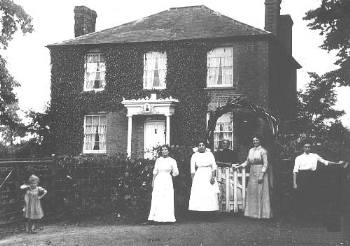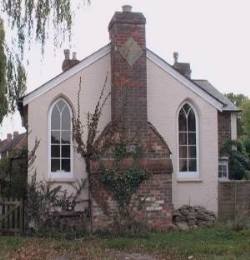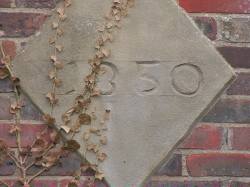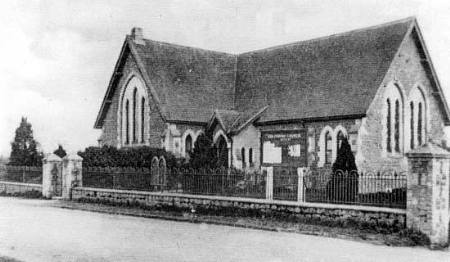| Methodism in Normandy
Methodism is marked by a desire for a simpler form of worship without
a stringent insistence on the need for doctrinal conformity. Because the
18th century Anglican Church was moving ever further away from such desires
the Methodism Sect formed a society within the Church of England. Its founder,
John Wesley, never wished the Sect to leave that Church, but in 1795, four
years after his death, there came a definite break from the Church of England.
The Sect, now recognised as The Methodists, later broke up into various
smaller schisms only to rejoin the Methodist Movement starting in the early
1900s. The largest group, the Wesleyan Methodists developed a government
centered in an Annual Conference with the UK divided into Districts and
the Districts into Circuits or groups of congregations. Ordained Ministers
were appointed to administer "The Sacraments" but local preachers
and laypersons, conducted the majority of other services. Within our local
circuit two families, namely the Hornes and the Parrotts, were greatly
involved in the introduction of Methodism to Normandy.
James Horne was born in Salisbury in 1798. Before he was 17 years of
age he joined the Royal Navy and served for four years. When he left the
sea he settled in Adstock near Buckingham and in 1819 he married Mary Chitty
of Poyle at her parish church of Seale in Surrey. Their first child, James,
was born in 1820 in Adstock and they went on to have 11 more children (eight
sons and four daughters), of which four sons and a daughter died in infancy.
Following the birth of James the couple decided to move to Surrey, coming
first to Flexford (where James senior set up as a schoolmaster), in addition
to seeking other employment. He took a lease of Normandy Hill Farm in 1822
but when the lease expired the owner refused to renew it and in September
1847 James purchased from Thomas Pink the smallholding at Normandy crossroads.
As mentioned in a previous article he named it "Mariners"
probably because he had served in the Navy.
| 
- Mariners and the
- Horne Family c1900
|
James senior had determined to join the Methodist Society after listening
to a sermon by the Rev W Breedon in 1819, given in the Wesleyan Chapel
at Padbury near Buckingham. When James first came to Normandy there was
no official place of worship, in what was then, a collection of small hamlets.
The local Wesleyans were invited to meet at his house in Flexford and he
joined in the worship at the Independent Chapel at Perry Hill, Worplesdon.
He later took over preaching at Pinks Hill with Isaac Austen of the Sevenoaks
Circuit, who had come to Godalming to work with the local preacher Mr Golding.
James was keen to extend Wesleyan worship to Normandy and so in 1853
he sold to the Rev Richard Chapman (on behalf of the Wesleyan Circuit),
for the nominal sum of ten pounds, a piece of the eastern end of his Arable
Plat that bordered on Glaziers Lane, and on which a small chapel had been
erected.


- The Croft, Glaziers Lane, built 1850
- with the date on its chimney
|
In 1861, James son Jabez preached his trial sermon in that chapel and
was recommended to become a local preacher. James built a pair of semi-detached
cottages, now The Croft and No.5 Glaziers Lane, adjacent to the chapel
and his sons James and Joseph took up residence there with their respective
families.
The Parrotts' were another family closely associated with Methodism
in Normandy. John Parrott brought his family to Normandy from Buckinghamshire
in 1862. He purchased the Normandy Manor Estate and in 1871 his two sons
William and John witnessed the Last Will and Testament of James Horse,
who died in that year on the 26th of February. William and John Parrott
both preached in the area and they opened their home at the Manor House
for Circuit Meetings.

- Wesleyan Methodist Chapel at the crossroads, Normandy
c1910
|
In 1871 the Methodists purchased two pieces of land at Normandy crossroads
from the Parrott family and in 1886 they built there, a large chapel in
the First Pointed Gothic style. The old chapel in Glaziers Lane became
redundant but was used in the early 1900s as an Evening Institute. The
attendance at the new chapel flourished but by the 1950s it had dwindled
to just a few of the faithful and in 1953 the chapel was de-consecrated
and sold to C J Williams when it was converted and used as an architects'
drawing office until 1965. The building became difficult to maintain and
in 1970 it was demolished and houses were built on the site.
Jack Kinder
References:
- Normandy Historians Collection.
- The Church in the Wilderness, Memorials of James Horne (printed
Guildford 1871 - Ref PW27)
- Encyclopedia Britannica, 15th Edition, 1983
-
- Also see
 "The
Church in the Wilderness" (Memorials of James Horne) "The
Church in the Wilderness" (Memorials of James Horne)
-
- Download
 "The
Church in the Wilderness" "The
Church in the Wilderness"
-
- Wikipedia links
- Methodism
- John
Wesley
|